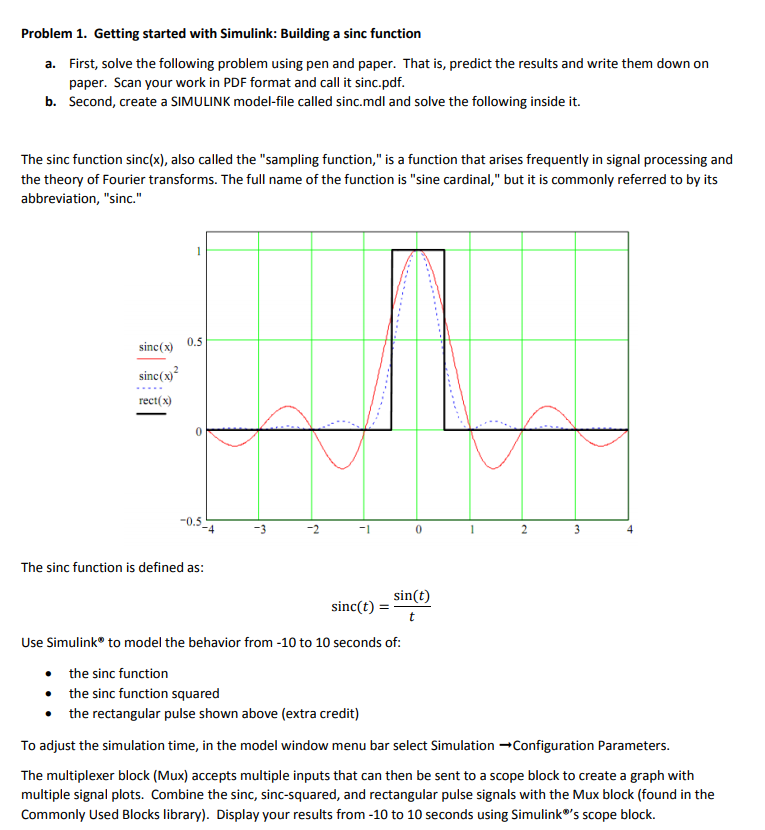Answered step by step
Verified Expert Solution
Question
1 Approved Answer
If applicable,please add your proceedure in sentences on how you solved the problem or like in steps.Thank you. Problem 1. Getting started with Simulink: Building


If applicable,please add your proceedure in sentences on how you solved the problem or like in steps.Thank you.
Problem 1. Getting started with Simulink: Building a sinc function First, solve the following problem using pen and paper. That is, predict the results and write them down on paper. Scan your work in PDF format and call it sinc.pdf Second, create a SIMULINK model-file called sinc.mdl and solve the following inside it. a. b. The sinc function sinc(x), also called the "sampling function," is a function that arises frequently in signal processing and the theory of Fourier transforms. The full name of the function is "sine cardinal," but it is commonly referred to by its abbreviation, "sinc. 0.5 sinc(x) sinc(x) rect(x) 0 0.5 -3 0 The sinc function is defined as sin(t) sinc(t) =- Use Simulink to model the behavior from -10 to 10 seconds of the sinc function . the sinc function squared . the rectangular pulse shown above (extra credit) To adjust the simulation time, in the model window menu bar select Simulation Configuration Parameters. The multiplexer block (Mux) accepts multiple inputs that can then be sent to a scope block to create a graph with multiple signal plots. Combine the sinc, sinc-squared, and rectangular pulse signals with the Mux block (found in the Commonly Used Blocks library). Display your results from -10 to 10 seconds using Simulink s scope block. Problem 1. Getting started with Simulink: Building a sinc function First, solve the following problem using pen and paper. That is, predict the results and write them down on paper. Scan your work in PDF format and call it sinc.pdf Second, create a SIMULINK model-file called sinc.mdl and solve the following inside it. a. b. The sinc function sinc(x), also called the "sampling function," is a function that arises frequently in signal processing and the theory of Fourier transforms. The full name of the function is "sine cardinal," but it is commonly referred to by its abbreviation, "sinc. 0.5 sinc(x) sinc(x) rect(x) 0 0.5 -3 0 The sinc function is defined as sin(t) sinc(t) =- Use Simulink to model the behavior from -10 to 10 seconds of the sinc function . the sinc function squared . the rectangular pulse shown above (extra credit) To adjust the simulation time, in the model window menu bar select Simulation Configuration Parameters. The multiplexer block (Mux) accepts multiple inputs that can then be sent to a scope block to create a graph with multiple signal plots. Combine the sinc, sinc-squared, and rectangular pulse signals with the Mux block (found in the Commonly Used Blocks library). Display your results from -10 to 10 seconds using Simulink s scope blockStep by Step Solution
There are 3 Steps involved in it
Step: 1

Get Instant Access to Expert-Tailored Solutions
See step-by-step solutions with expert insights and AI powered tools for academic success
Step: 2

Step: 3

Ace Your Homework with AI
Get the answers you need in no time with our AI-driven, step-by-step assistance
Get Started


